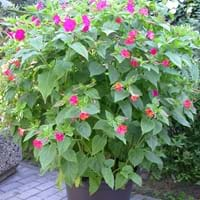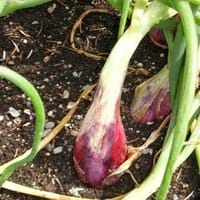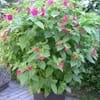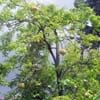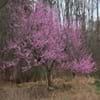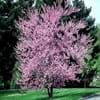Life Span
Perennial
Annual
Type
Flowering Plants, Grass, Shrubs
Vegetable
Origin
Central America, North America
Asia
Types
Not Available
Not Available
Habitat
Temperate Regions, tropical environments
Not Available
USDA Hardiness Zone
7-10
4-8
AHS Heat Zone
Not Available
12-1
Sunset Zone
Not Available
A1, A2, A3, H1, H2, 1a, 1b, 2a, 2b, 3a, 3b, 4, 5, 6, 7, 8, 9, 10, 11, 12, 13, 14, 15, 16, 17, 18, 19, 20, 21, 22, 23, 24
Habit
Upright/Erect
Clump-Forming
Flower Color
Pink, Red, White, Yellow
White
Flower Color Modifier
Bicolor
Bicolor
Fruit Color
Black, Green
Not Available
Leaf Color in Spring
Green, Dark Green
Green, Light Green
Leaf Color in Summer
Dark Green
Green, Light Green, Chartreuse
Leaf Color in Fall
Yellow green
Green, Yellow green
Leaf Color in Winter
Dark Green
Not Available
Leaf Shape
Egg-shaped
Acicular
Plant Season
Fall, Late Summer, Mid Summer
Summer
Sunlight
Full Sun
Full Sun, Partial Sun
Type of Soil
Loam, Sand
Loam, Sand
The pH of Soil
Neutral, Slightly Acidic, Slightly Alkaline
Neutral
Soil Drainage
Well drained
Well drained
Bloom Time
Early Fall, Late Summer, Mid Summer
Summer
Tolerances
Drought
Drought
Where to Plant?
Container, Ground, Pot
Ground
How to Plant?
Seedlings
Cuttings
Plant Maintenance
Low
Medium
Watering Requirements
Do not water excessively
Average Water Needs
In Summer
Lots of watering
Lots of watering
In Spring
Moderate
Moderate
In Winter
Average Water
Average Water
Soil pH
Neutral, Slightly Acidic, Slightly Alkaline
Neutral
Soil Type
Loam, Sand
Loam, Sand
Soil Drainage Capacity
Well drained
Well drained
Sun Exposure
Full Sun
Full Sun, Partial Sun
Pruning
Cut back old stems to the ground
Remove damaged leaves, Remove dead branches, Remove dead leaves
Fertilizers
as it is a flowering plant, use high phosphorous content fertilizer
All-Purpose Liquid Fertilizer
Pests and Diseases
Aphids, Slugs
Red blotch
Plant Tolerance
Drought
Drought
Flower Petal Number
Single
Single
Fragrant Bark/Stem
No
Yes
Foliage Texture
Coarse
Medium
Foliage Sheen
Matte
Matte
Attracts
Bees, Butterflies
Aphids, Beetles
Allergy
Not Available
Cold, Irritate the mucus membrane, Sinuses
Aesthetic Uses
Showy Purposes, small hedge
Not Used For Aesthetic Purpose
Beauty Benefits
Making cosmetics
Not Available
Environmental Uses
Not Available
Air purification
Medicinal Uses
anti-inflammatory, Aphrodisiac, Diuretic, Purgative, Vulnerary
anti-inflammatory, Antiseptic, Antispasmodic, Hypotensive
Part of Plant Used
Flowers, Leaves
Flowers, Leaves, Root
Other Uses
Edible dye
Cosmetics, Used as a dye
Used As Indoor Plant
No
No
Used As Outdoor Plant
Yes
Yes
Garden Design
Container, Edging, Feature Plant, Foundation, Wildflower
Edible, Herb / Vegetable
Botanical Name
Mirabilis jalapa
ALLIUM cepa( Aggregatum Group)
Common Name
marvel of peru, four o'clock flower
Scallion, Shallot
In Hindi
Mirabilis jalapa
Shallot
In German
Wunderblume
Schalotte
In French
Belle-de-nuit
échalote
In Spanish
Dondiego de noche
chalote
In Greek
mirabilis Jalapa
είδος κρεμμυδιού
In Portuguese
Maravilha
Sallot
In Polish
mirabilis Jalapa
Sallot
In Latin
mirabilis Ja-
Sallot
Phylum
Magnoliophyta
Tracheophyta
Class
Magnoliopsida
Magnoliopsida
Order
Caryophyllales
Asparagales
Family
Nyctaginaceae
Liliaceae
Clade
Angiosperms, Core eudicots, Eudicots
Angiosperms, Monocots
Tribe
Not Available
Not Available
Subfamily
Not Available
Not Available
Number of Species
Not Available
Difference Between Mirabilis Jalapa and Shallot
If you are confused whether Mirabilis Jalapa or Shallot are same, here are some features about those plants to help you choose better. Many people think that these two plants have the same characteristics, but one can see Mirabilis Jalapa and Shallot Information and learn more about it. Fertilizers required for proper growth of Mirabilis Jalapa are as it is a flowering plant, use high phosphorous content fertilizer, whereas for Shallot fertilizers required are All-Purpose Liquid Fertilizer. Hence, one should know the basic difference between Mirabilis Jalapa and Shallot if you are planning to have them in your garden to enhance its beauty.
<
Flowering PlantsImportance of Mirabilis Jalapa and Shallot
Want to have the most appropriate plant for your garden? You might want to know the importance of Mirabilis Jalapa and Shallot. Basically, these two plants vary in many aspects. Compare Mirabilis Jalapa and Shallot as they differ in many characteristics such as their life, care, benefits, facts, etc. Every gardener must at least have the slightest clue about the plants he wants to plant in his garden. Compare their benefits, which differ in many ways like facts and uses. The medicinal use of Mirabilis Jalapa is anti-inflammatory, Aphrodisiac, Diuretic, Purgative and Vulnerary whereas of Shallot is anti-inflammatory, Antiseptic, Antispasmodic and Hypotensive. Mirabilis Jalapa has beauty benefits as follows: Making cosmetics while Shallot has beauty benefits as follows: Making cosmetics.
Compare Facts of Mirabilis Jalapa vs Shallot
How to choose the best garden plant for your garden depending upon its facts? Here garden plant comparison will help you to solve this query. Compare the facts of Mirabilis Jalapa vs Shallot and know which one to choose. As garden plants have benefits and other uses, allergy is also a major drawback of plants for some people. Allergic reactions of Mirabilis Jalapa are Not Available whereas of Shallot have Cold, Irritate the mucus membrane and Sinuses respectively. Having a fruit bearing plant in your garden can be a plus point of your garden. Mirabilis Jalapa has no showy fruits and Shallot has no showy fruits. Also Mirabilis Jalapa is not flowering and Shallot is not flowering . You can compare Mirabilis Jalapa and Shallot facts and facts of other plants too.
